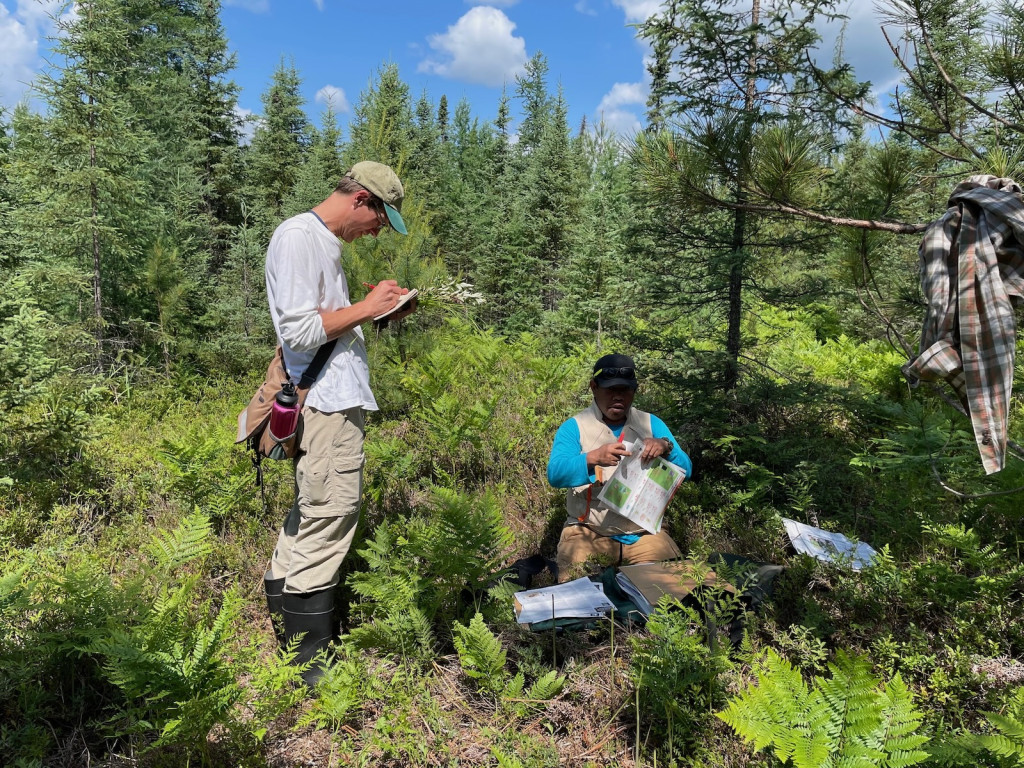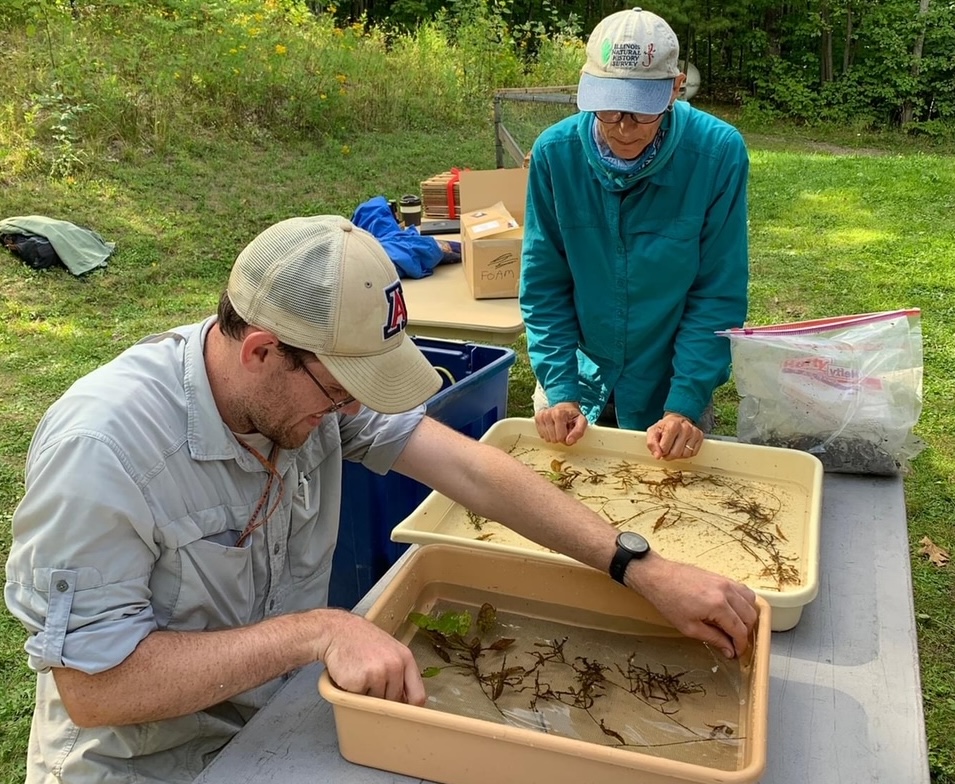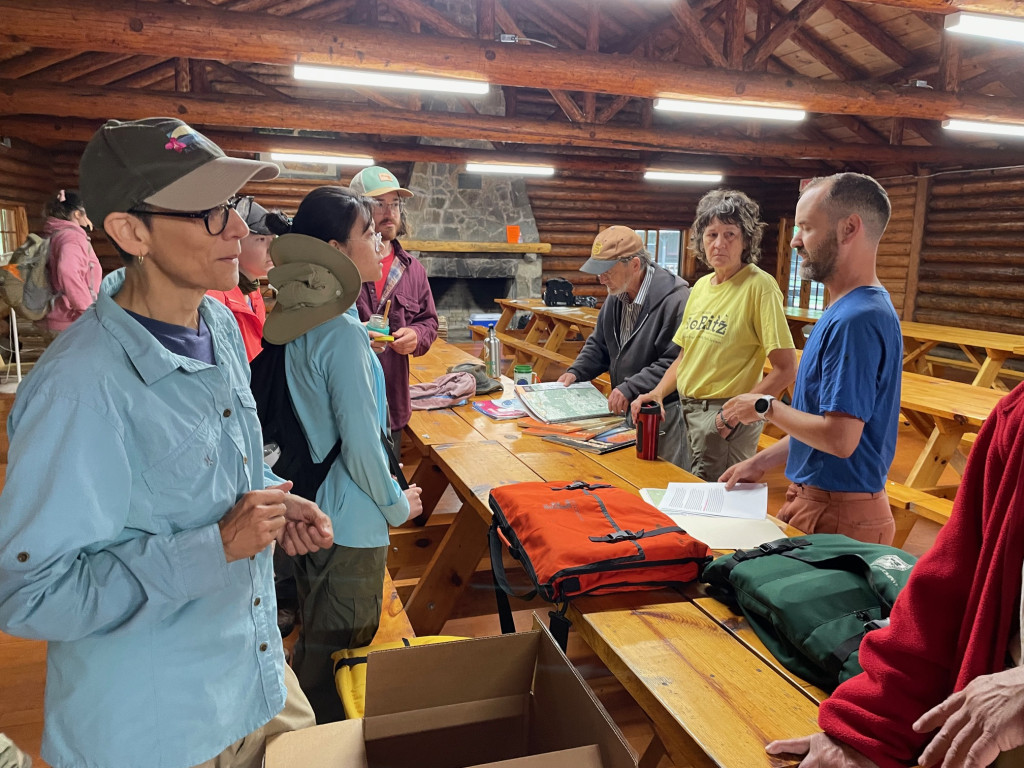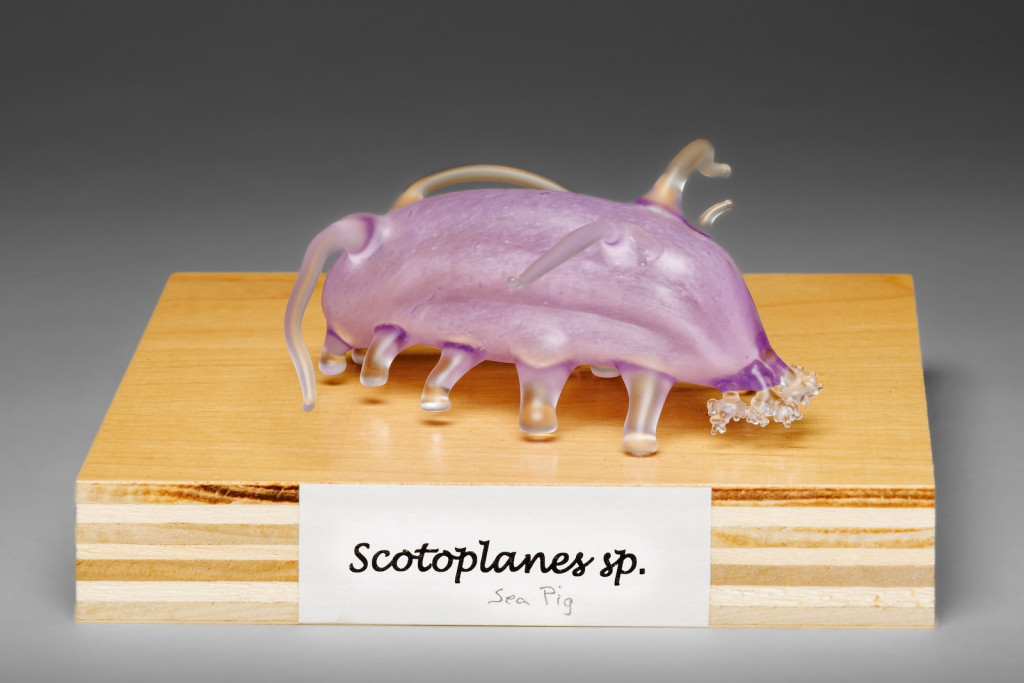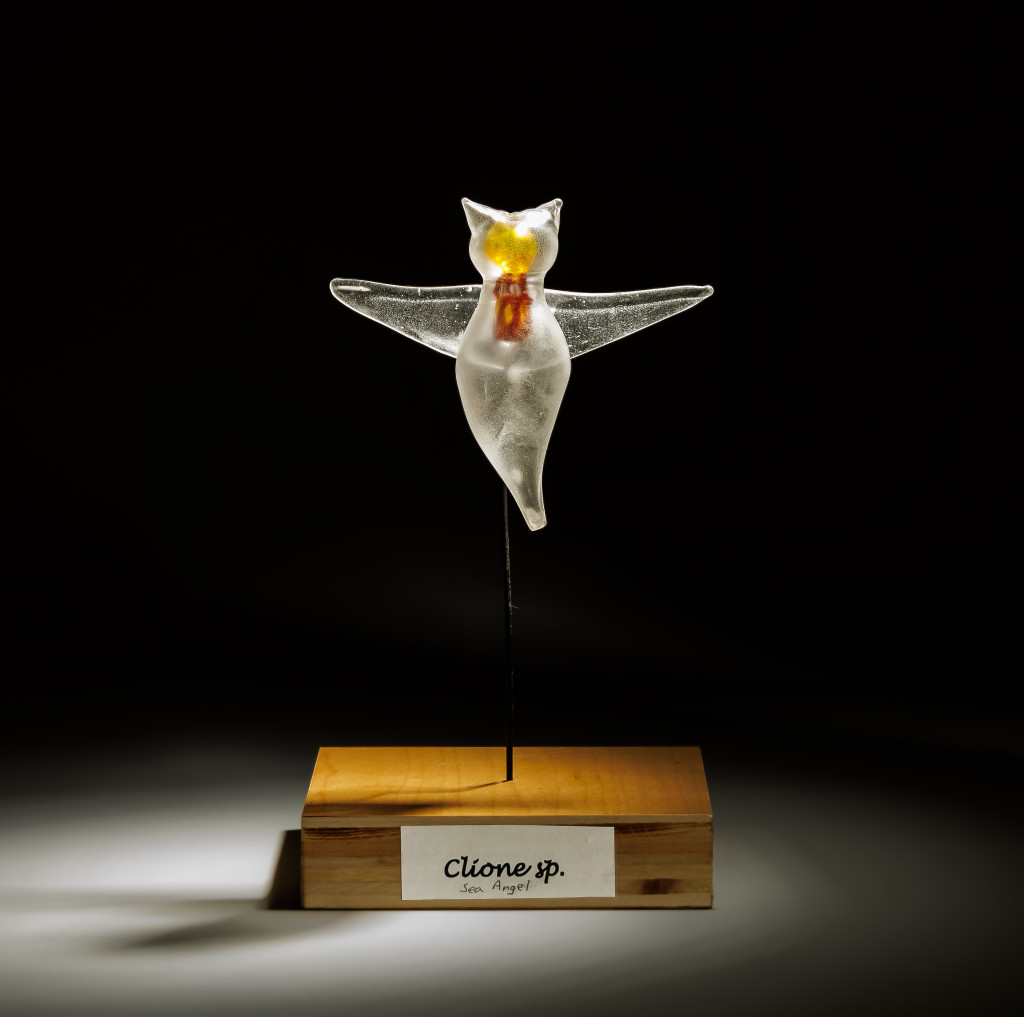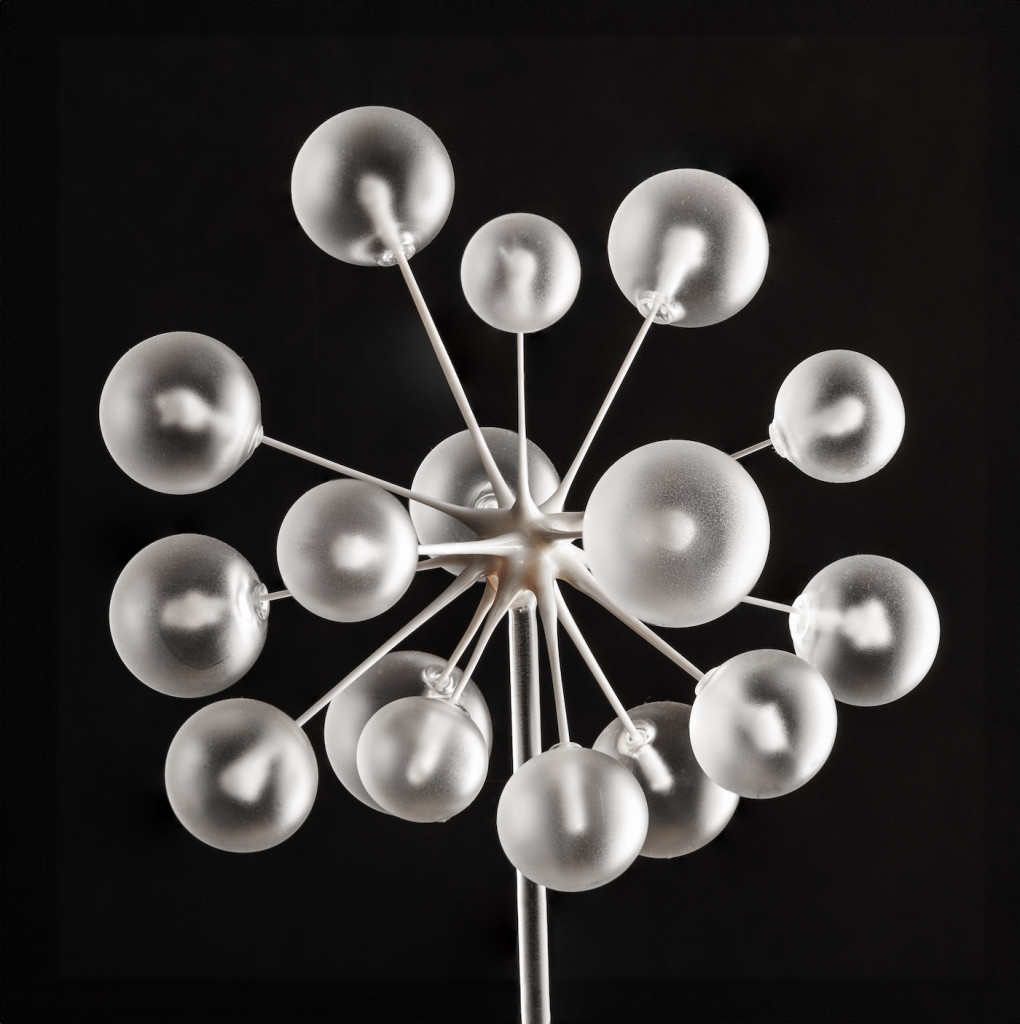175th Anniversary projects bring together UW’s past, future
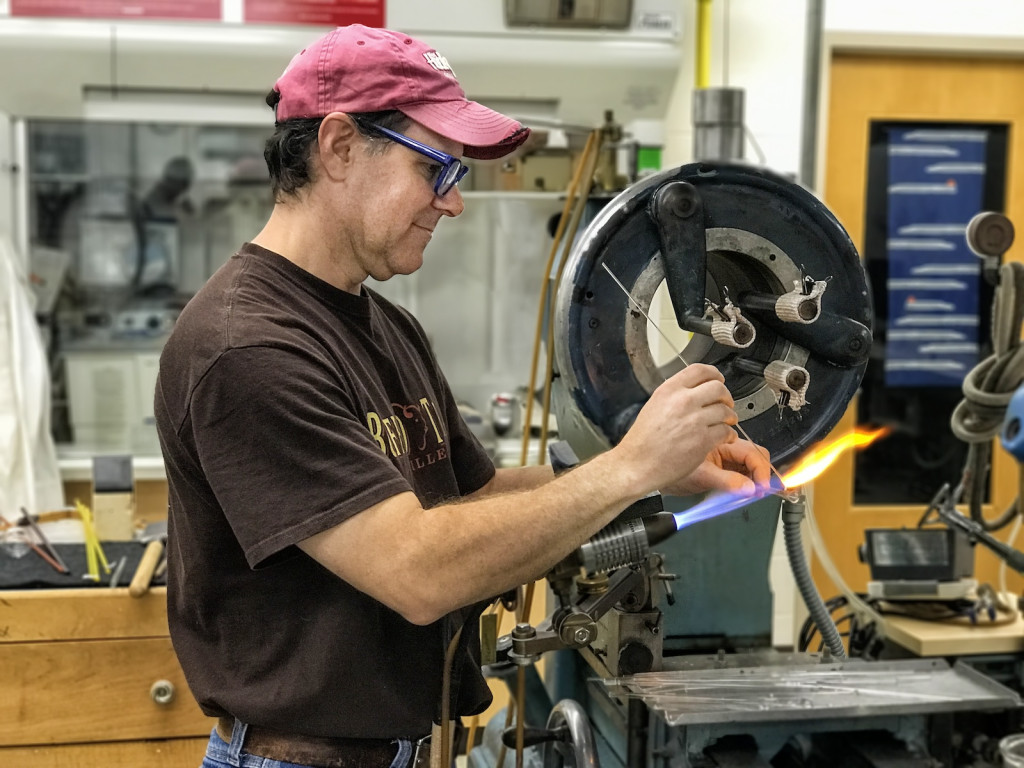
Glassblower Tim Drier creates glass models of deep-sea creatures for UW–Madison. Photo by Kandis Elliot
Aquatic invertebrates are often difficult to study when they are living, and some can’t even survive outside their deep-ocean habitats.
That’s why, 127 years ago, University of Wisconsin biology professor Edward Birge purchased glass models of sea creatures ranging from jellyfish to sea cucumbers from famous German glassblowers Leopold and Rudolph Blaschka, for use in teaching biology.
It’s also why, this year, Laura Monahan arranged for UW–Madison to hire expert glassblower Tim Drier to create similar deep-sea invertebrate models, as the old ones were too delicate and artistically valuable to handle.
“The new models will be used for teaching undergraduate and graduate students,” says Monahan, associate director at the UW Zoological Museum. “In addition, they will be used in both artistic and scientific exhibitions.”
The glass-blowing project was one of 20 projects funded by a 175th anniversary grant, given to faculty, staff, and students to support activities that recognize and celebrate UW’s 175th anniversary and the Wisconsin Idea. The grants were mostly for $1,000 or less.
What they have in common is they all tie the University of Wisconsin’s past into its present and future. Approved by Chancellor Jennifer L. Mnookin and the 175th Anniversary Steering Committee, the projects include events, initiatives, research projects, curriculum, academic efforts, artistic works and community outreach.
“The wide variety of projects reflects the legacy of innovation across the UW–Madison campus, from biology to astronomy to international studies,” says Charles Hoslet, recently retired vice chancellor for university relations, who chaired the 175th Anniversary Steering Committee. “The projects honored our past successes and demonstrated how they set the stage for our current and future achievements.”
Here are a few of the projects:
Digitizing AOS photos
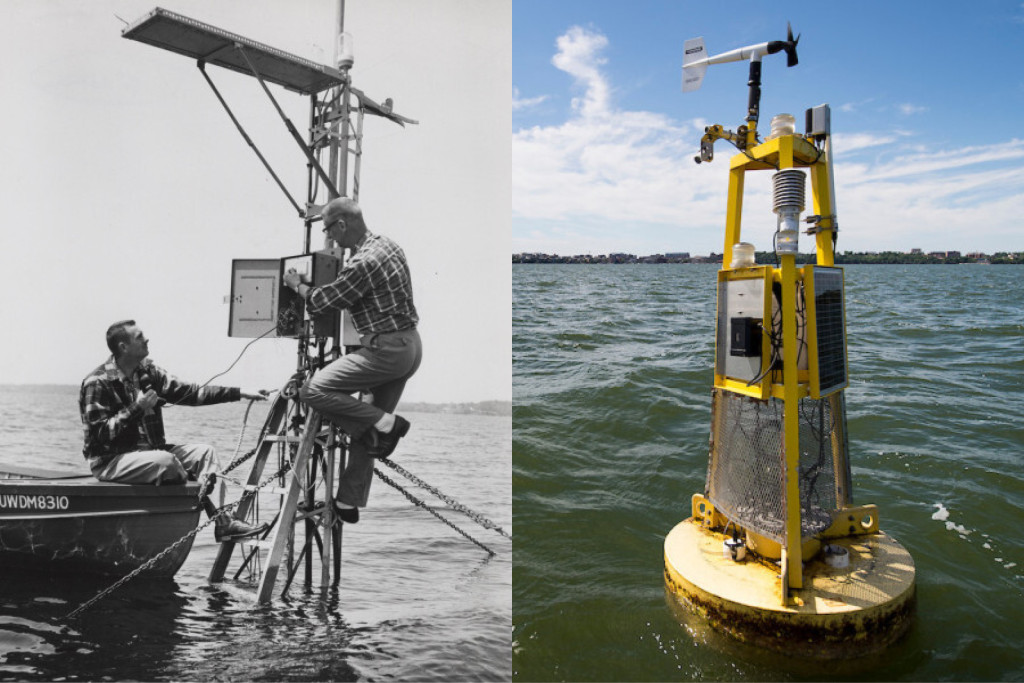
AOS’s photo collection shows the evolution of its equipment and tools. On the left, Reid Bryson and Charles Stearns of AOS (then meteorology) in 1960 gather micrometeorological data from the first research buoy on Lake Mendota. Right, what the buoy looks like today, with much smaller equipment.
The Department of Atmospheric and Oceanic Sciences is using its grant to digitize its collection of print photographs dating back to its founding in 1948, creating an online repository of AOS history.
“We envision a powerful education and outreach tool that allows students, alumni, and the public to explore the department’s evolution – one with 76 years (and counting!) of history,” says Scott Dyke, communications specialist for AOS.
AOS was an early pioneer and remains a leader in the study of climate and weather, producing innovative science of local and global significance.
The photos illustrate how technology in field research has grown dramatically since the 1950s, and they capture historical moments, such as the construction of the landmark AOSS building in the 1960s, Dyke says. They showcase prominent faculty and researchers who advanced the department and the field.
“Some of the photos capture the early implementation of these technologies, helping trace the progression of tools, instruments, and methodologies,” Dyke says, such as a pair of photos that show the progression of equipment on a data-collecting buoy in Lake Mendota.
Collecting botanical specimens
The Wisconsin State Herbarium at UW–Madison used its grant to hold a 175th anniversary botanical foray in Marinette County in summer 2023. Over a long weekend, more than 30 citizen scientists, students, faculty, and staff from across the UW System collected more than 1,200 scientific plant specimens. Over the winter, they were sorted, identified and put in the database, and eventually they’ll be mounted and labeled and added to the permanent collection of the State Herbarium.
The herbarium has been digitizing its 1.4 million specimens, entering each specimen’s label, photograph and the geographical coordinates where it was found into a database, to be shared freely online at herbarium.wisc.edu.
Already, more than 300,000 plant specimens from Wisconsin have been digitized, but that work has revealed some geographic gaps, including Marinette County, which has old growth forests and other important natural areas. This foray targeted that gap.
The specimens will allow future scientists to see the effects of climate change from the late 19th to the early 21st century, says botany professor Ken Cameron, director of the herbarium. For instance, the foray was unable to locate the endangered fairyslipper orchid ( ), which had been spotted in the area a few years earlier. It is possibly one of Wisconsin’s first casualties of climate change, Cameron says.
“I like to say that we are not collecting to preserve the past, but are collecting for the future,” he says. “How scientists 175 years from today will use these specimens we can only imagine. Will future scientists be interested in the elements preserved in the leaf tissues? The density of plant hairs on the specimens? Their DNA? The soil or microbes adhering to the plant roots? Only time will tell.”
It’s fortunate that early botanists began documenting Wisconsin’s flora in the mid-1800s and have continued to do so since, Cameron says.
“So much of our state’s once pristine habitats have been lost or degraded through time, but the herbarium helps to preserve what has been lost.”
Creating glass models of deep-sea creatures
Monahan says the models created by Drier are accurate and “artistically spectacular.” They include a sea pig (Scotoplanes sp.), a sea angel (Clione sp.), a ping pong tree sponge (Chondrocladia concrescens) and a brittle star (Ophiothrix fragilis).
They also tie into UW’s history, as Birge had purchased the models in 1897 to replace some that were lost in the Science Hall fire. Birge would go on to serve as UW president from 1918 to 1925. At the time the original models were purchased, the Blaschkas had sold thousands of intricate and scientifically accurate glass teaching models to universities and museums around the world.
“The new models exemplify the tradition of scientific glassblowing, complement the existing Blaschka collection, and will be used for teaching and exhibition today and in the future,” says Monahan.

